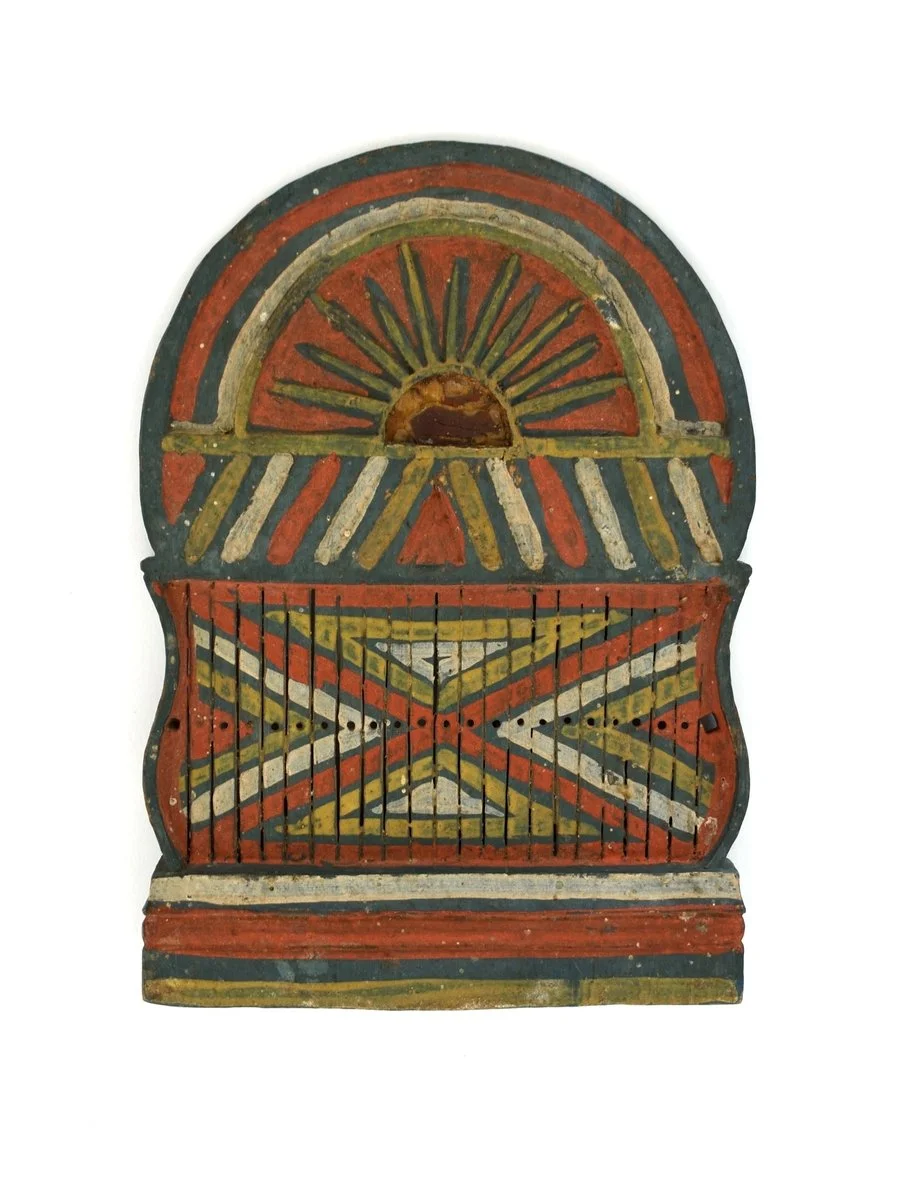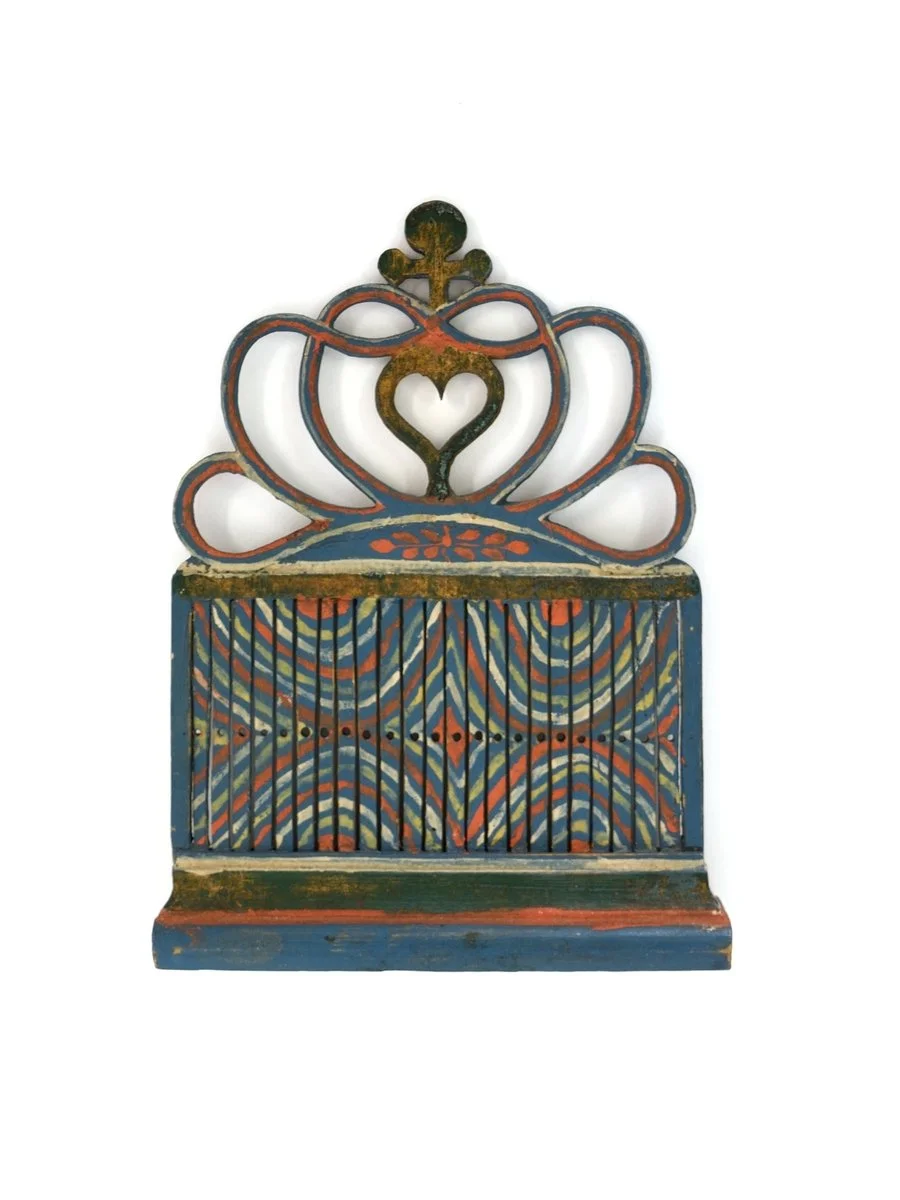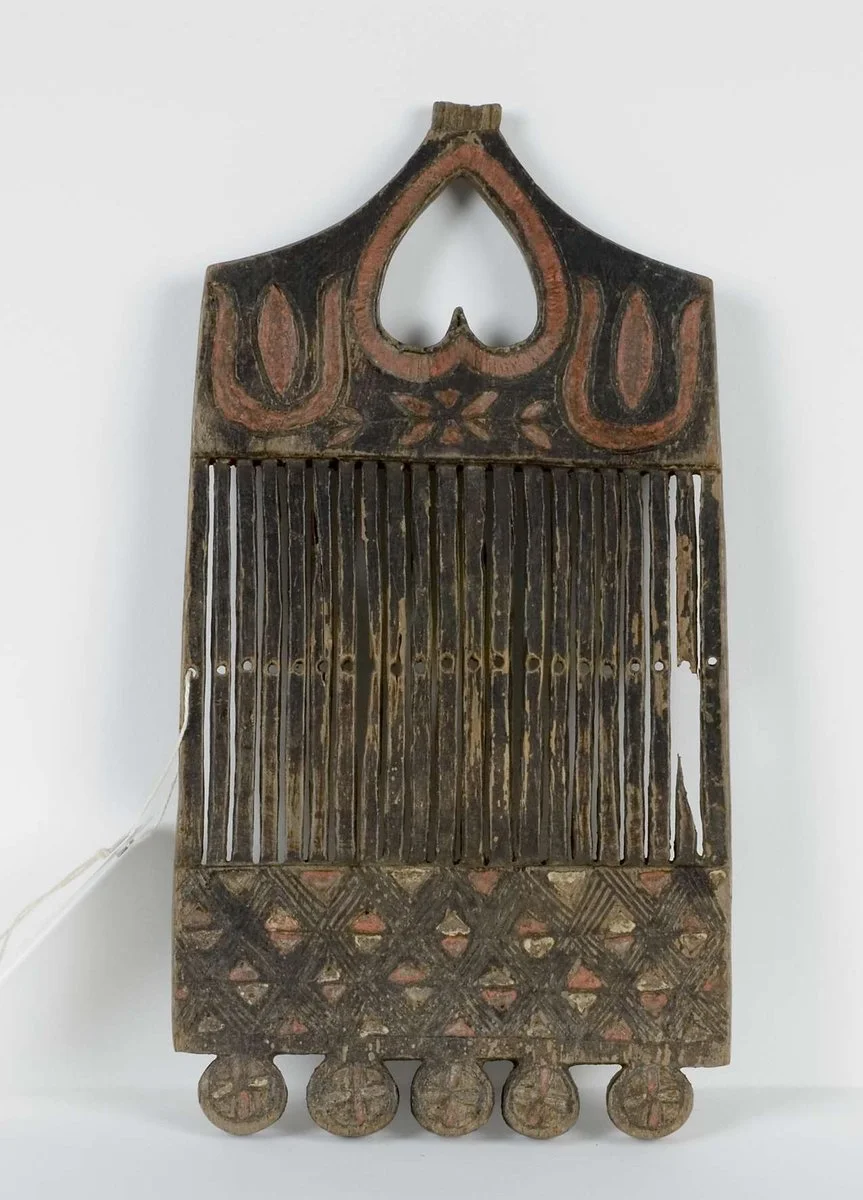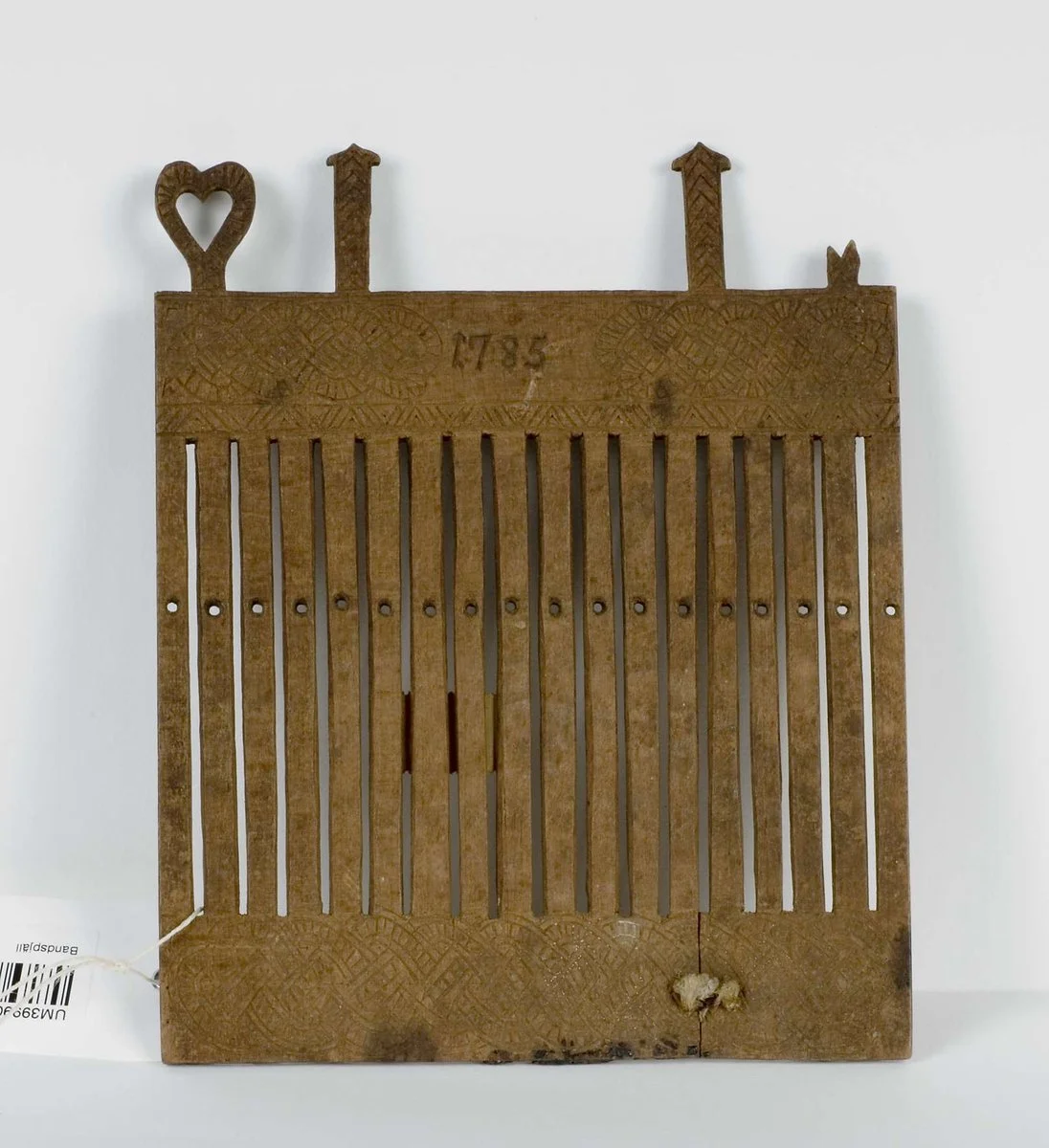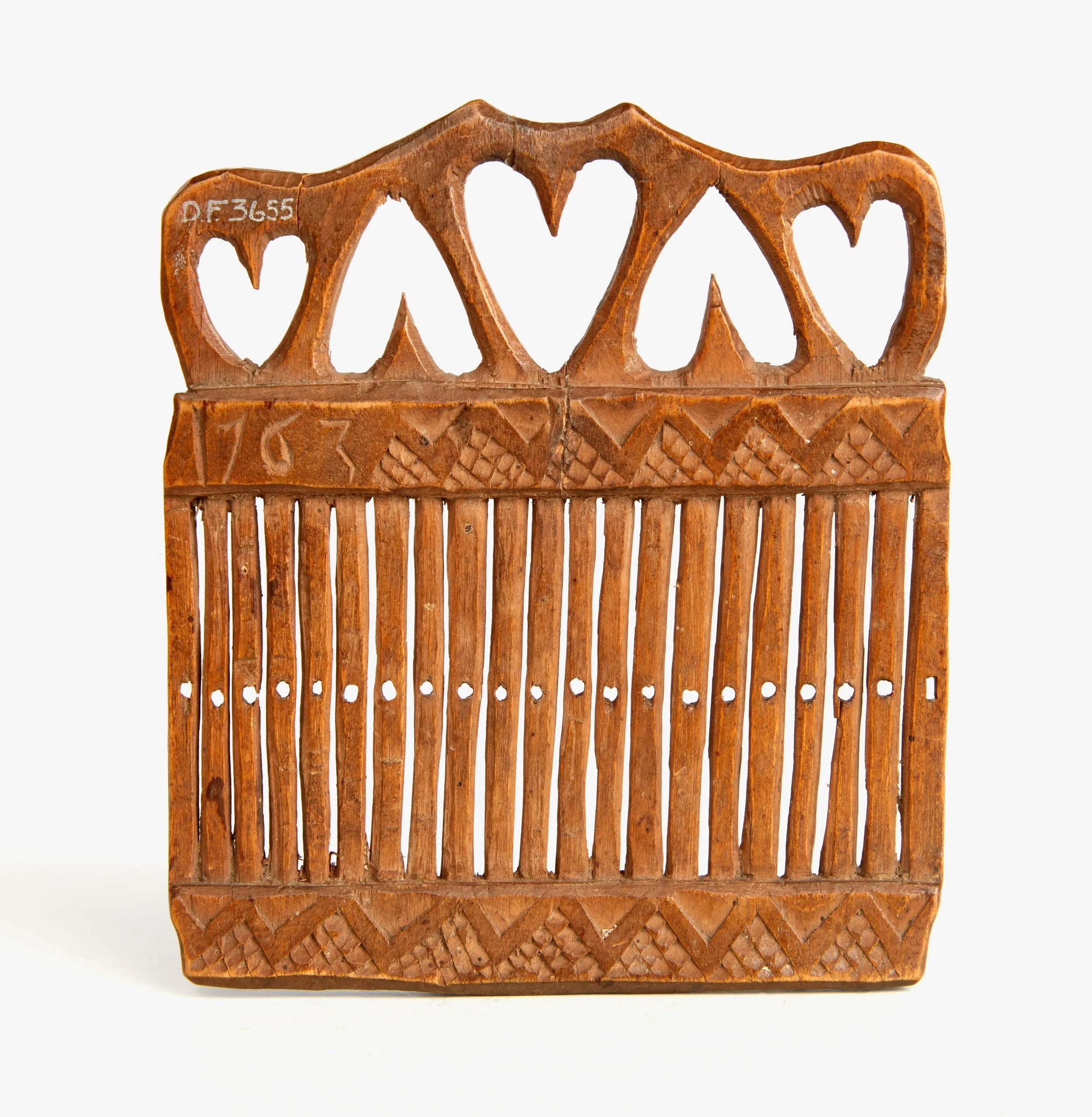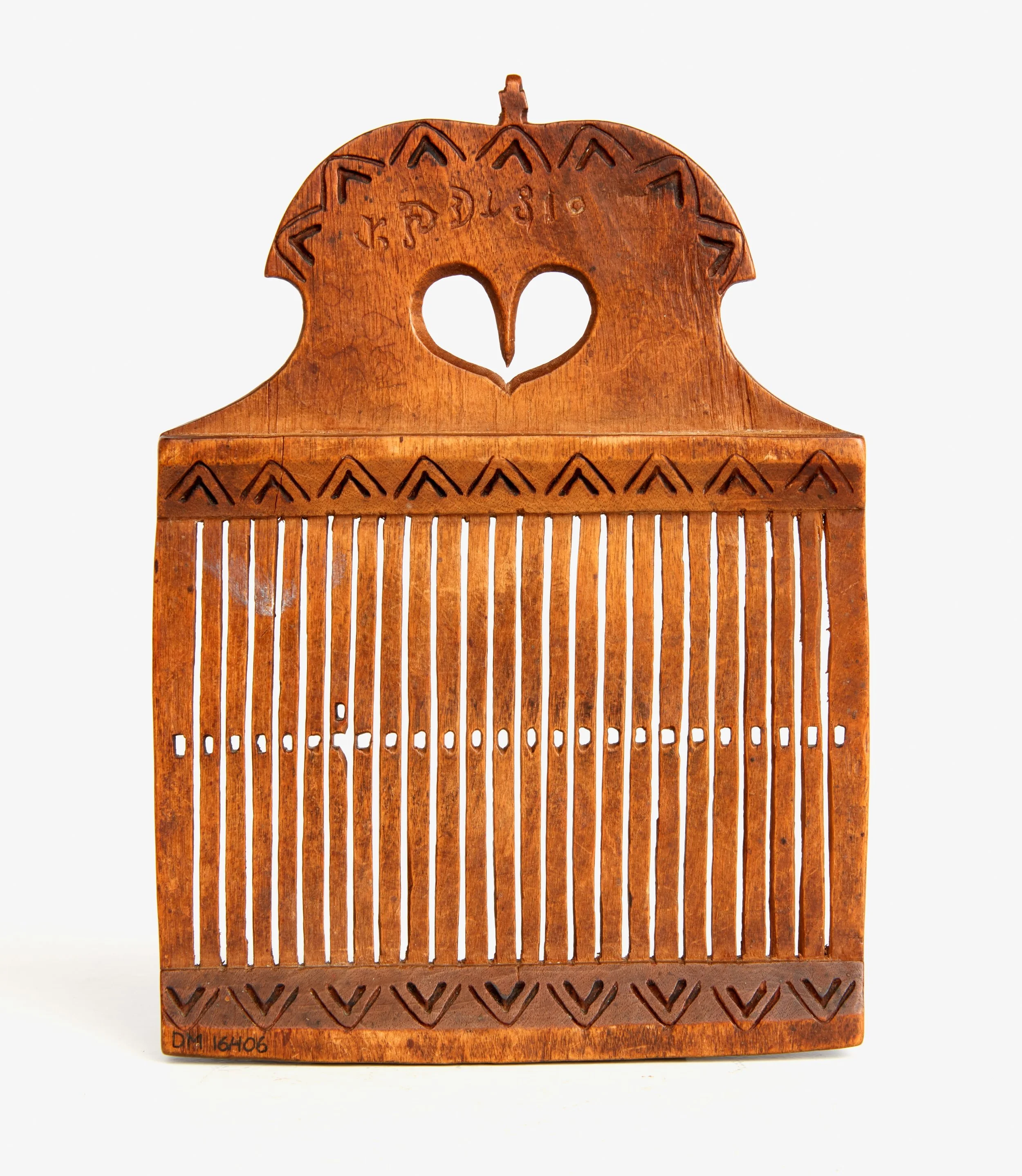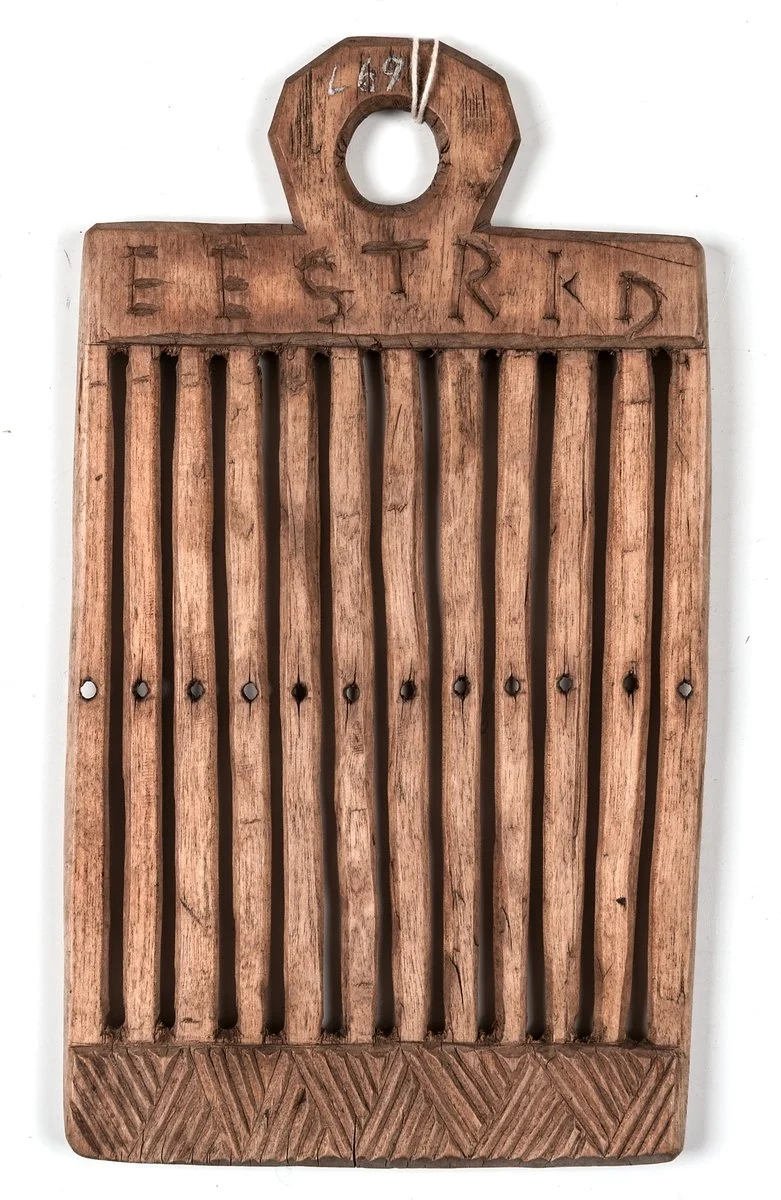Historical heddles from museum collections
The weaving tools I make and use the simplifying term “Heddles“ for are heavily inspired by old Scandinavian traditional ones. These are usually made of wood* and could be painted in fanciful patterns, which often conveyed a romantic intention as they were often made as courting gifts.
Understandable, courting gifts sometimes tend to prioritize impressiveness over usefulness, and some of these heddles are really unnecessarily large and clumsy, which gives us a hint that utility was perhaps not what has foremost in the mind of the maker.
It’s worth to point out, though, that even if the image of a yearning youth carving a love token to give to their object of admiration, fancily painted heddles were also sometimes made to be sold at markets, and were not exclusively made by the giver.
There are also many heddles that verge towards utilitarian tools in the museum archives, as you will see of you take a look for yourself.
All images below are from the Swedish online digital museum hub “Digitalt museum“, where you can search for images from the digitalized collections of many of Sweden’s museums. I recommend that you use search terms like “Bandgrind“, “Vävspjäll“, “Bandspjäll“ or “Bandsked“ if you want to make a search of your own. I have made a selection of some cool and/or endearing ones below, all of them verging towards the romantic side of the heddle making tradition.
On some of these heddles you will see name ciphers consisting of three letters each. This is the old way of referring to someone through a patronym where the first letter is for the persons name, the second for their father, and the third marks if the person is male or female. Since my name is Kerstin and my fathers name is Magnus, my name cipher would be KMD, where the last letter stands for “Daughter“. Were I a man, it would be “KMS“ instead, marking me as someone’s son.
*Sami people used horn to make their heddles, a subject I’ll leave up to the Sami to share about.
County of collection: Gävleborg, no date
So heavily painted that the slits are actually clogged with paint, I suspect this heddle was never actually used for weaving. There seems to be something missing in the middle of the sun, can it be that there has been something shiny inserted there?
Link
County of collection: Hälsingland, no date
Anyone working with wood will tell you that those thinly cut out shapes are extremely fragile, but the effect is so delicate! Perhaps the wood used is a really hard one, like pear or apple wood, to make it hold up through the ages. Or maybe it has lived a calm life as a decoration.
Link
County of collection: Hälsingland, marked 1807
I want to remark on the fanciful painting here: At the top, the very delicate vines, but then over the weaving section there are some really bold strokes that are a very simplified version of trompe l’oeil painting where the wood is made to look like a fancier material: Stone. This tradition first arose when people painted their wooden walls to look like the more expensive stone, and then in meandered onto painted wooden furniture, and efter that, any wooden surface really.
“It doesn’t really look like stone“, you say?
You are so right. This is an example of when an art has been traded through many hands, changing it’s expression every time, and in the end, it has a life of it’s own, almost disconnected from the original tradition.
Oh, I want to remark ont he cut-out decoration as well - Isn’t that a D on the right? And a letter on the left? Is the round ring an O? It the patronym “LOD“? I don’t know… It says 1807 for sure though, and if that wasn’t a cut out heart before it broke, I’ll eat my hat.
County of collection: Uppland, estimated period 1800-1849
This is perhaps a clearer example of painting stone to look like wood. The checkered pattern is beautifully striking but i imagine I’d get a headache from actually trying to weave on this heddle…
County of connection: Uppland, Acquired by the museum in 1887
It’s not the best image, but there’s some really nice chip carving going on at the bottom of this heddle! I might need to try a version of that…
County of collection: Uppland, Länna parish , marked MJD 1785
First, I saw the sparse decoration on top. I winder of there has been more things sticking up or if that was it?
Then I looked closer and I saw the meandering viking-esque pattern that looks to be kohlrosed. Isn’t that sweet?
Link
County of collection: Dalarna, marked 1763
Such a subtle message. Such wonky, clumsy craftmanship. I love it.
Link
County of collection: Dalarna, marked “KPD 1810“
This one has a design that looks very much like it was burned into the surface. it’s not so commonly seen on Digitalt Museum, so I thought it was worth a spotlight!
Also, sweet heart-shape.
Link
County of collection: Dalarna, marked “EES + RKD“
One more of the clumsy but heartfelt kind. Isn’t it sweet in it’s simplicity? The museum states that it is marked “1734“, maybe that’s on the backside?
Link
All of the images above are under the creative common license, which as I understand it, allows users to share the images as long as one references their original address. Hope I got that right :)
